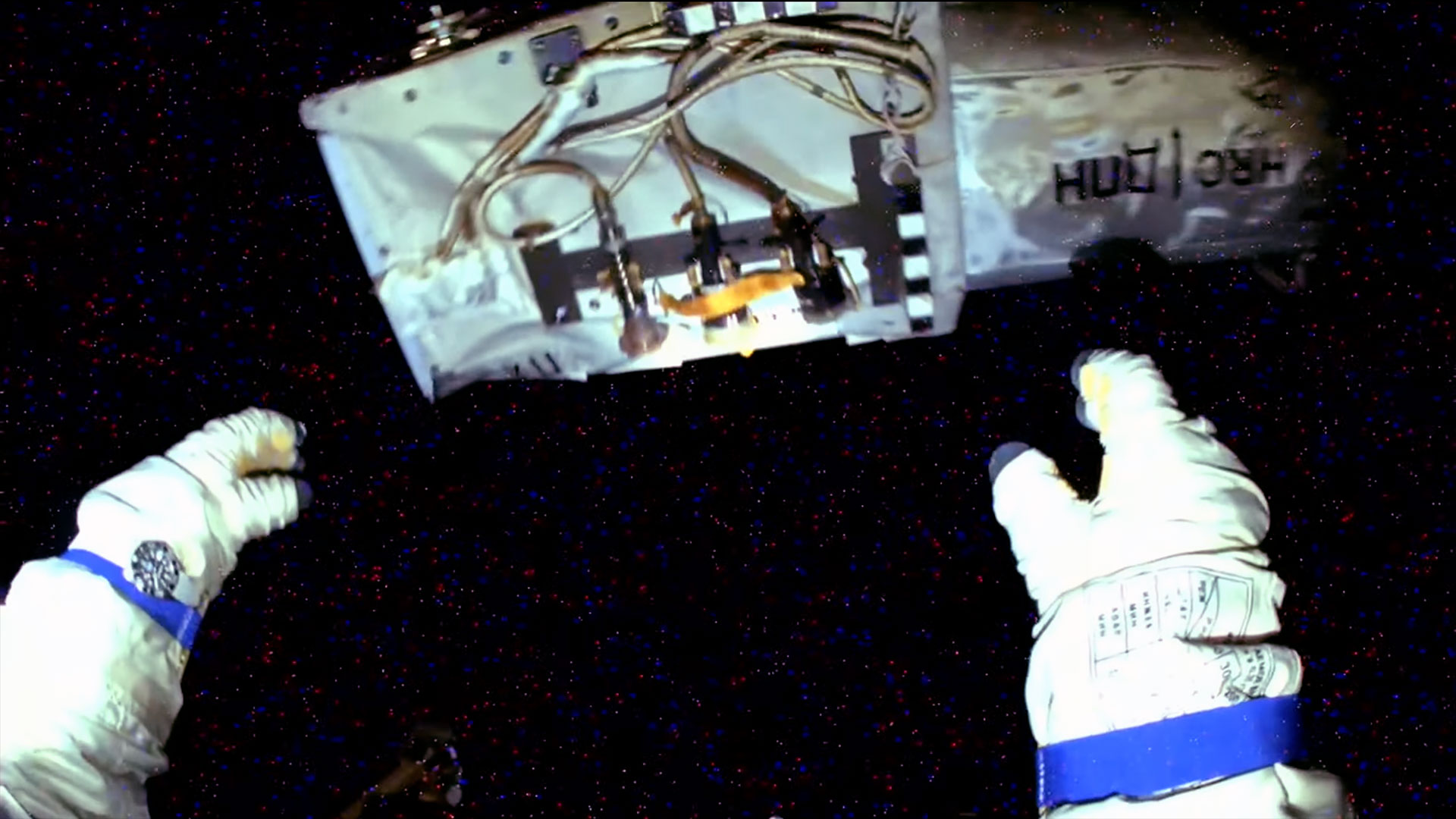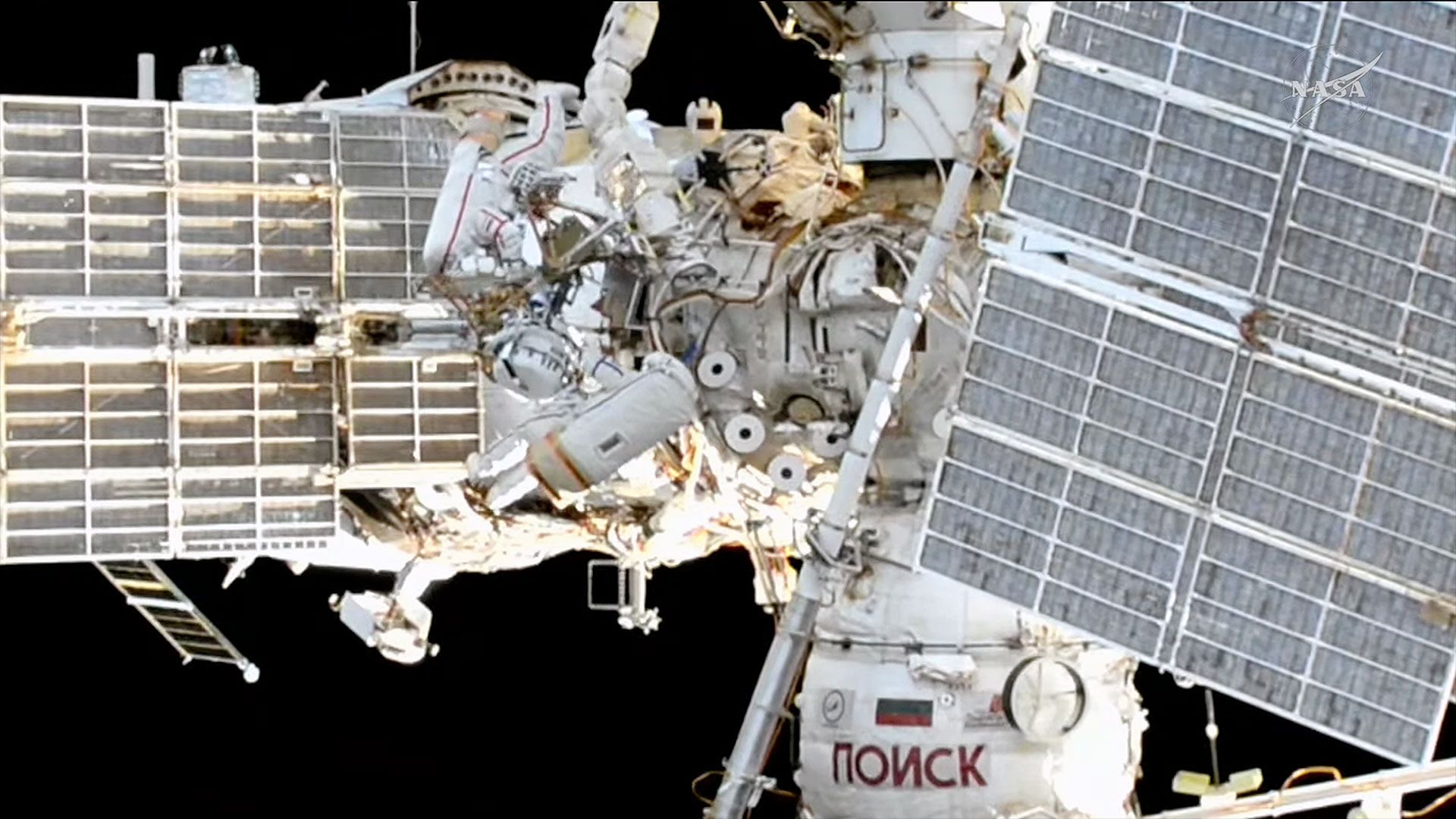Two Russian cosmonauts are back inside the International Space Station after conducting a spacewalk to install a semiconductor materials experiment, as well as retrieve and jettison a no-longer-needed camera from the exterior of the orbiting complex.
Expedition 73 commander Sergey Ryzhikov and flight engineer Alexey Zubritsky, both with Russia’s federal space corporation Roscosmos, marked the end of their first extravehicular activity (EVA) together at 7:19 p.m. EDT (2319 GMT) on Thursday (Oct. 16). The two cosmonauts reentered the Poisk module’s airlock and closed the hatch behind them, 6 hours and 9 minutes after they began the spacewalk at 1:10 p.m. EDT (1710 GMT).
After configuring their tools, the two crewmates made their way to their first worksite, outside of the Nauka multipurpose laboratory module. Ryzhikov held onto the Ekran-M, or Molecular Beam Epitaxy experiment, while riding at the end of the European Robotic Arm (ERA), which was driven by cosmonaut Oleg Platonov from a workstation inside the space station.
Ryzhikov and Zubritsky installed the drum-shaped unit, ran power cables and mounted a swappable cassette. The experiment is intended to demonstrate the ability to produce very thin materials — too thin to be made reliably on Earth — that can go from the microgravity environment of outer space to being used in semiconductors.
Their primary task completed, Ryzhikov and Zubritsky then made their way to the Zvezda service module to remove and dispose of a high-definition television system that was originally a part of a Canadian commercial payload. Zubritsky then stood a the end of the European Robotic Arm and tossed the camera overboard, toward the rear of the space station, ensuring it would not come back in contact with the outpost.
“It is going so well,” radioed Zubritsky as the camera disappeared into the shadow of Earth. “Jettison is complete.”

Given its relatively small mass (180 pounds, or 82 kilograms) and volume (2 by 4.6 by 2.3 feet, or 0.6 by 1.4 by 0.7 meters), the jettisoned equipment will fall back to Earth and be destroyed during its reentry into the atmosphere.
Ryzhikov and Zubritsky also cleaned a window on the service module before heading back to the Poisk module, picking up an exposed material samples experiment to bring back with them into the space station.
Thursday’s spacewalk was the second for Expedition 73 and the 276th in support of the International Space Station‘s assembly and maintenance since 1998. It was Zubritsky’s first EVA and the second for Ryzhikov, who now has logged a total of 12 hours and 57 minutes on his two spacewalks.
First Appeared on
Source link













